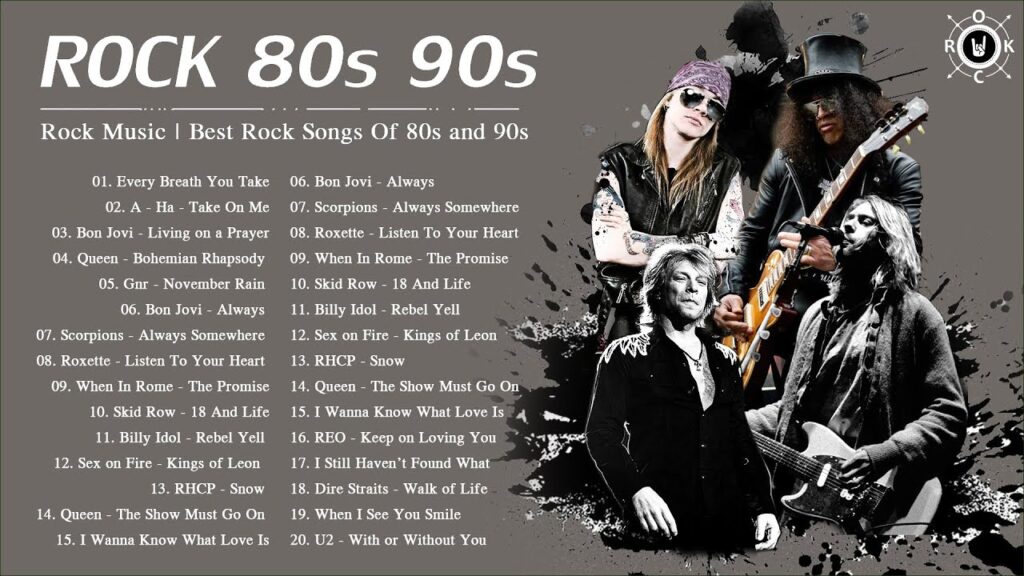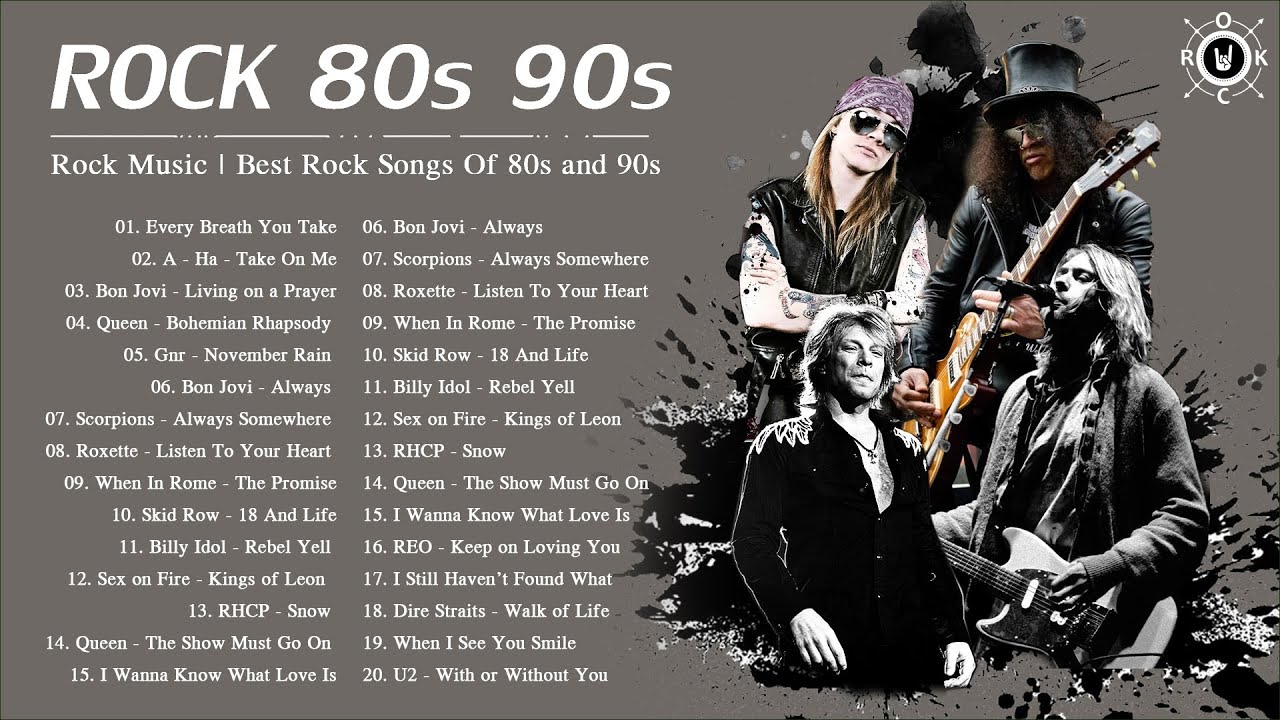
The Enduring Legacy of 90’s Rock and Roll Music
The 1990s were a pivotal decade for rock and roll music, a period of immense creativity, diversification, and commercial success. Often referred to as alternative rock’s golden age, this era witnessed the rise of grunge, the continued evolution of hard rock, and the emergence of various subgenres that redefined the soundscape. Exploring 90’s rock and roll music provides a fascinating glimpse into a time when rock reigned supreme, influencing fashion, culture, and youth identity. This article will delve into the key movements, influential artists, and lasting impact of 90’s rock and roll music.
The Rise of Grunge: A Revolution in Sound
Grunge, originating from Seattle, Washington, became the defining sound of the early 90’s rock and roll music scene. Characterized by its raw, angst-ridden lyrics, distorted guitars, and a general sense of disillusionment, grunge resonated with a generation grappling with economic uncertainty and social change. Bands like Nirvana, Pearl Jam, Soundgarden, and Alice in Chains spearheaded this movement, achieving mainstream success while maintaining a rebellious spirit.
Nirvana: The Unlikely Kings of Grunge
Nirvana, fronted by the enigmatic Kurt Cobain, arguably became the most iconic band of the 90’s rock and roll music era. Their breakthrough album, Nevermind (1991), shattered sales records and brought grunge into the mainstream consciousness. Songs like “Smells Like Teen Spirit” became anthems for a generation, capturing a sense of frustration and apathy that resonated deeply. Cobain’s songwriting prowess and raw emotional delivery set a new standard for rock frontmen. [See also: The Impact of Kurt Cobain on Music]
Pearl Jam: The Antidote to Rock Star Excess
Pearl Jam, led by Eddie Vedder’s powerful vocals and socially conscious lyrics, offered a different perspective on the grunge sound. While still rooted in the same raw energy, their music often explored themes of social justice and personal responsibility. Albums like Ten (1991) and Vs. (1993) solidified their place as one of the most important bands of the 90’s rock and roll music scene. Pearl Jam’s commitment to their fans and their rejection of traditional rock star excess further cemented their legacy.
Soundgarden and Alice in Chains: Exploring the Darker Side
While Nirvana and Pearl Jam dominated the mainstream, Soundgarden and Alice in Chains delved into darker, more experimental territory. Soundgarden, with Chris Cornell’s soaring vocals and Kim Thayil’s innovative guitar work, blended heavy metal influences with grunge sensibilities. Alice in Chains, known for their haunting harmonies and Layne Staley’s introspective lyrics, explored themes of addiction and despair. Both bands contributed significantly to the diversity and depth of the 90’s rock and roll music landscape.
The Continued Evolution of Hard Rock and Metal
While grunge dominated the headlines, hard rock and metal continued to evolve throughout the 1990s. Bands like Metallica, Guns N’ Roses, and Red Hot Chili Peppers maintained their popularity, while new acts like Rage Against the Machine and Tool pushed the boundaries of the genre. This period saw a fusion of styles, with elements of funk, hip-hop, and alternative rock influencing the sound of hard rock and metal.
Metallica: Adapting and Evolving
Metallica, already a metal institution by the 1990s, continued to evolve their sound, experimenting with different styles while maintaining their signature heaviness. Albums like Metallica (The Black Album) (1991) achieved massive commercial success, proving that metal could still resonate with a mainstream audience. Their ability to adapt and evolve while staying true to their roots solidified their status as one of the most influential metal bands of all time. Their contribution to 90’s rock and roll music cannot be overstated.
Guns N’ Roses: The Last of the Rock Star Outlaws
Guns N’ Roses, despite internal turmoil and lineup changes, remained a force to be reckoned with in the early 1990s. Their album Use Your Illusion I & II (1991) showcased their ambitious songwriting and raw energy. While their later years were marked by controversy and delays, their impact on the 90’s rock and roll music scene is undeniable. They represented a dying breed of rock star outlaws, pushing boundaries both on and off stage.
Red Hot Chili Peppers: Funk Rock Pioneers
The Red Hot Chili Peppers continued their unique blend of funk, rock, and punk throughout the 1990s, achieving mainstream success with albums like Blood Sugar Sex Magik (1991) and Californication (1999). Their energetic live performances and Anthony Kiedis’s distinctive vocals made them one of the most popular bands of the decade. They brought a fresh, funky energy to the 90’s rock and roll music scene.
Rage Against the Machine: Political Activism Through Music
Rage Against the Machine emerged as a powerful voice of political activism in the 1990s, blending hard rock, hip-hop, and funk into a potent sonic cocktail. Zack de la Rocha’s fiery lyrics and Tom Morello’s innovative guitar playing made them one of the most influential and politically charged bands of the era. Their music challenged the status quo and inspired a generation to question authority. Their integration of rap and rock was a significant development in 90’s rock and roll music.
Tool: Progressive Metal Visionaries
Tool, with their complex song structures, philosophical lyrics, and Maynard James Keenan’s haunting vocals, carved out a unique niche in the 90’s rock and roll music scene. Their albums, such as Ænima (1996) and Lateralus (2001) (released just outside the 90s but heavily influenced by it), showcased their technical prowess and intellectual depth. They pushed the boundaries of progressive metal, creating a sound that was both challenging and rewarding.
The Rise of Alternative Rock Subgenres
Beyond grunge and hard rock, the 1990s saw the emergence of various alternative rock subgenres, each with its own distinct sound and aesthetic. Britpop, industrial rock, and alternative metal all gained popularity, further diversifying the 90’s rock and roll music landscape.
Britpop: A British Invasion Revisited
Britpop, originating in the United Kingdom, offered a more melodic and optimistic alternative to grunge. Bands like Blur, Oasis, and Pulp dominated the charts, creating a distinctly British sound that drew inspiration from The Beatles and The Kinks. Britpop became a cultural phenomenon, celebrating British identity and challenging American dominance in the music industry. [See also: The Britpop Rivalry: Oasis vs. Blur]
Industrial Rock: The Fusion of Metal and Electronic Music
Industrial rock, blending elements of heavy metal, electronic music, and industrial noise, gained popularity in the 1990s. Bands like Nine Inch Nails and Marilyn Manson pushed the boundaries of musical taste, creating a dark and abrasive sound that resonated with a counter-cultural audience. Their provocative lyrics and theatrical stage presence further cemented their place in the 90’s rock and roll music scene.
Alternative Metal: A Bridge Between Genres
Alternative metal, a fusion of heavy metal and alternative rock, gained traction in the 1990s. Bands like Faith No More, Primus, and System of a Down blended heavy riffs with unconventional song structures and eclectic influences. Alternative metal paved the way for the nu-metal explosion of the late 1990s and early 2000s, further blurring the lines between genres.
The Lasting Impact of 90’s Rock and Roll Music
The 90’s rock and roll music era left an indelible mark on music history. Grunge, hard rock, and alternative rock subgenres all contributed to a period of immense creativity and diversification. The influence of 90’s rock and roll music can still be heard in contemporary music, and the legacy of the decade’s iconic artists continues to inspire new generations of musicians. The raw emotion, social commentary, and musical innovation of the 1990s cemented its place as one of the most important decades in rock history. Ultimately, the era of 90’s rock and roll music was a transformative period, permanently shaping the landscape of popular music and culture. The impact of 90’s rock and roll music is evident in today’s artists. Many contemporary bands cite 90’s rock and roll music as a major influence. Exploring 90’s rock and roll music provides insights into a pivotal time. Remembering the 90’s rock and roll music scene highlights its significance. Even now, 90’s rock and roll music continues to be enjoyed. The sounds of 90’s rock and roll music are timeless. Reflecting on 90’s rock and roll music reveals its impact. The diversity within 90’s rock and roll music is remarkable. The energy of 90’s rock and roll music remains infectious. The story of 90’s rock and roll music is still being told.
Conclusion
From the angst-ridden anthems of grunge to the politically charged lyrics of Rage Against the Machine, 90’s rock and roll music reflected the spirit of a generation. The decade’s diverse range of styles and influential artists cemented its place as a pivotal moment in music history, leaving a lasting legacy that continues to resonate today.
